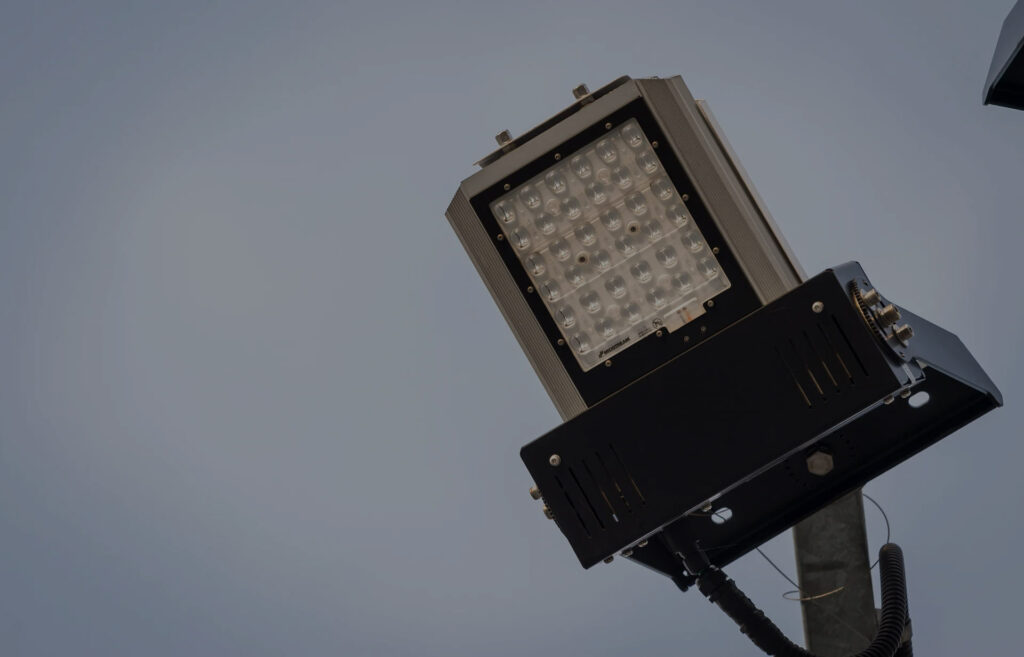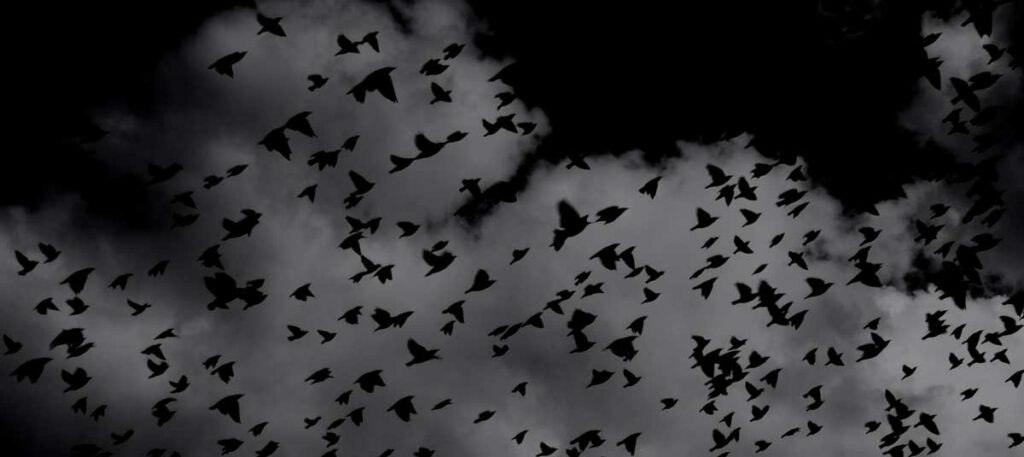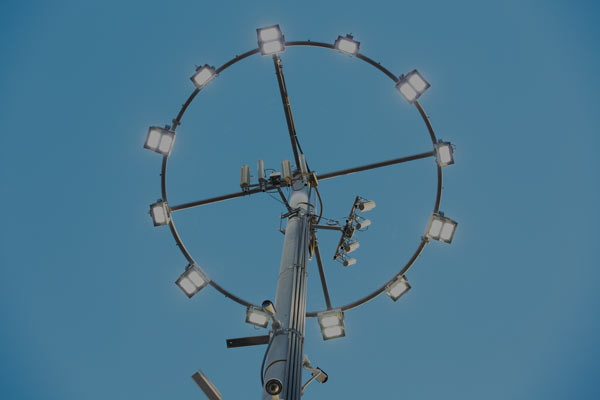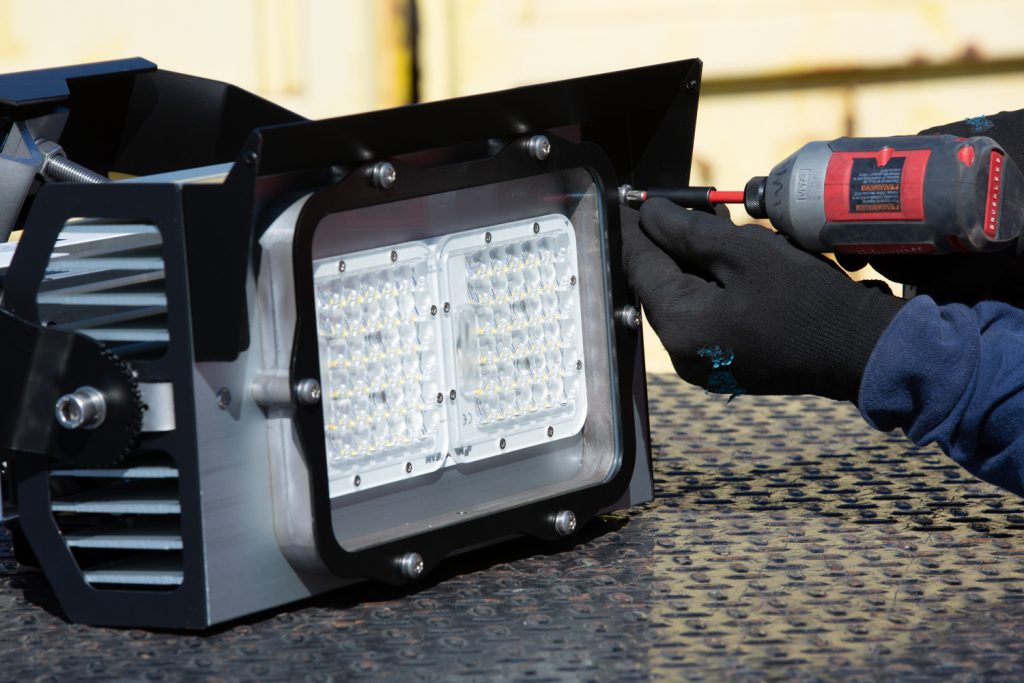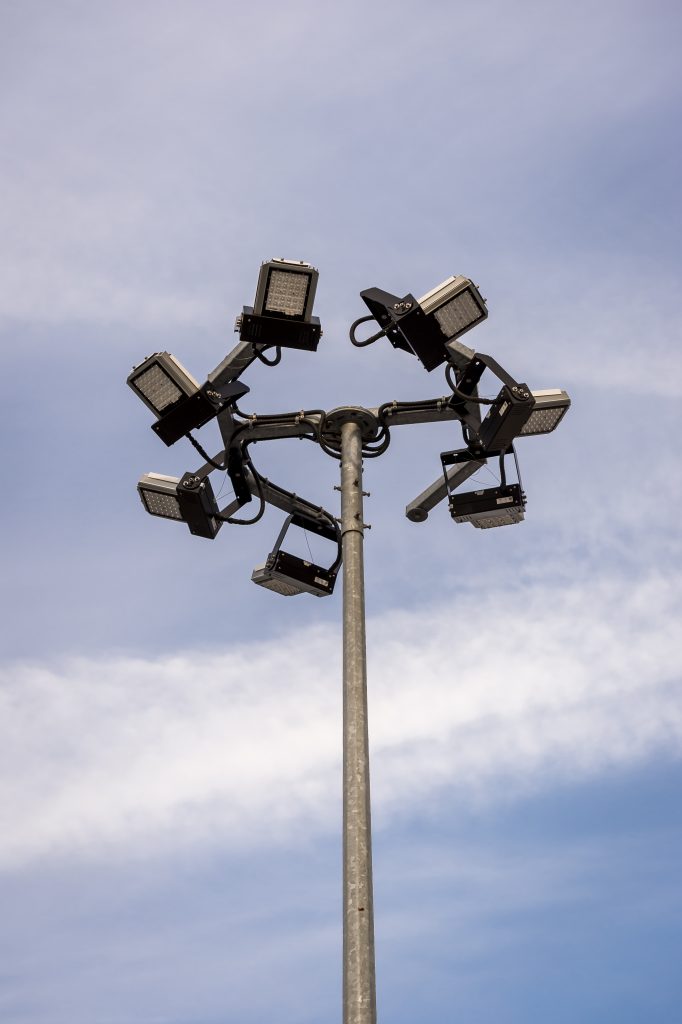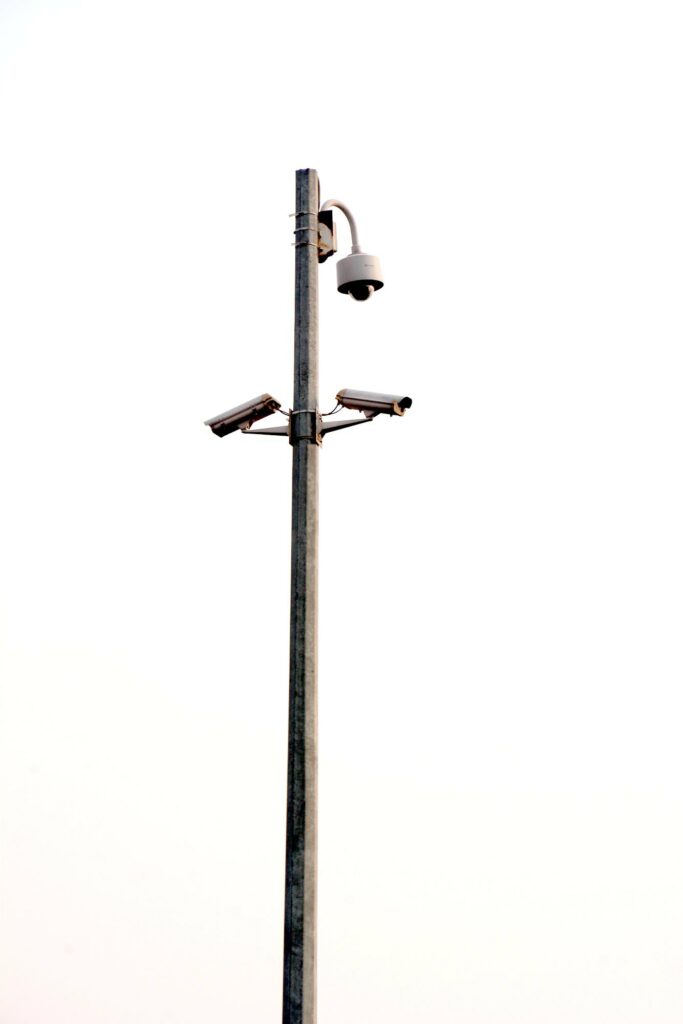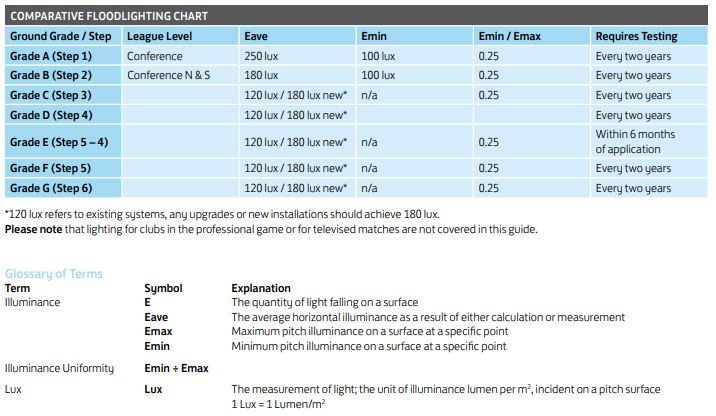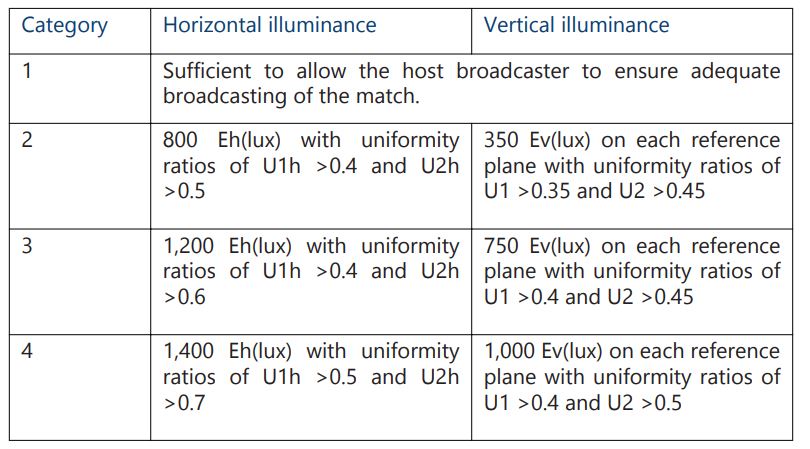Most people working on the airfield side of an airport will be familiar with Airfield Ground Lighting (AGL). They’re very standard products. It doesn’t matter who you buy them from, things like their output, size and optics will be almost the same.
But with LED floodlighting that’s not the case. You can’t assume a 600W floodlight from one supplier will behave in the same way as a 600W floodlight from another. They can in fact perform very differently.
This means you can’t approach a potential supplier saying ‘We’ve had a design from a supplier using 123 pieces of 400W floodlights. Can you give us a quote for the same number so we can use that as your competitive bid?’.
Unfortunately, you can’t just do that as floodlights will vary depending on their photometry and efficacy – the efficiency of useful light on the ground. So, you could have a 400W floodlight, with the right optics, performing better much than a more ‘powerful’ 600W one.
Another important factor to consider is how well products will fare over time. LED lighting will degrade, just like sodium or metal halide lighting – at a much slower rate though. But you still need to know by how much and over what time period. Again, this will be different for each manufacture and will certainly depend on the environment in which they operate
So, a manufacturer’s design and quote for a project must be based on their actual products. If they’re not, you can’t make any meaningful comparison.
The lesson here, in summary, is don’t try to compare ‘apples with oranges’.
Lesson Two: Test, measure and verify
Let’s move on to the next phase of a project.
You’ve chosen a supplier. Their design works – on paper. You know it meets or exceeds your needs. And it’s on budget. You give it the green light and it gets completed. You may think that’s it, job done.
But it’s not.
You’ve got to check that what was promised in the design phase is true to real life and it really complies with or exceeds what’s required by your local aviation authority.
Here’s an example why. Istanbul Airport asked 10 major lighting suppliers to pitch for an upgrade to the airport’s lighting. As part of the pitch process, they asked each supplier to set up two test poles to demonstrate they could reach the compliance levels shown in their designs. 80% didn’t pass the test. The Airport Authority was very relieved they ran the test!
And you need to go on testing and verifying your lighting regularly, with a documented testing methodology, to make sure it stays compliant.
As an example, Frankfurt Airport had a new system installed during the winter. After live testing, it was confirmed it matched the light levels needed. In fact, the lighting exceeded what was required, as a ‘buffer’ had been allowed for in the design. Six months later, in the summer, when they ran the tests again, the levels had fallen by 20%. They were still within the required levels though because of the ‘buffer’. The airport however was obviously concerned why they’d fallen and what would happen in the coming months and years. When they tested again in the winter, the lighting was back to its original levels. It was the ambient temperature change between the winter and the summer that was having an effect. By factoring this into their testing methodology they were able to make true comparisons going forwards, test after test.
The lesson here? Test, measure, and verify regularly to make sure you stay compliant with regulations. And going a bit above and beyond what’s required in the standards is never a bad idea…
Lesson Three: Optics rule
Glare is the enemy of all airports. It primarily affects pilots and can cause not just discomfort but also temporary blindness, which in turn can lead to accidents. So, from a health and safety standpoint reducing glare is exceedingly high on an airport’s agenda.
This is where the optics used come into play.
In virtually all the projects we’ve done, we’ve used our proprietary asymmetric optics. Why? Simply because they deliver a low glare output spread over a large angle compared to symmetric optics. We also make sure that they have a full cut-off above the horizontal plane to further reduce the chance of any glare issues.
The result is lower glare, not just for pilots but for ground staff too.
This lesson? Put your supplier under the spotlight when it comes to glare and get a guarantee it won’t be a problem for you.
Lesson Four: Pay cheap – pay twice
When it comes to virtually any project, engineers want to use premium products to give the best possible outcome. Finance departments, however, are usually focused on the price. And this can cause problems.
We’ve heard many ‘horror stories’ where the budget has been the primary reason for choosing a particular supplier’s solution.
In one case, because the luminaire’s heat dissipation wasn’t up to the job, the LEDs burnt themselves out so much, they actually fell off their circuit board.
In another, cheap floodlights were used and within six months nearly all of them had failed. They were replaced under warranty. But within another six months, they’d failed again. To solve the problem once and for all, the airport had to approve a new budget for a more expensive, more resilient solution.
So, remember these three things:
- Apron floodlighting is part of your critical infrastructure. Don’t let budget be your controlling factor when it comes to it. The cost of having a cheaper system can be quickly outweighed by the costs of continued maintenance etc. And just imagine that you had an accident on an apron – if your lighting wasn’t up to prescribed standards you could end up facing huge legal costs.
- Premium products will almost always outlast low-quality ones. And premium product providers usually will be around for a lot longer than their competitors. Go cheap and you may find that, when problems start to happen later down the line, the company you went for isn’t around to put things right.
- Contractors are always looking to make as big a margin as they can. They try to reduce costs by taking what’s in the design specification and replacing certain products with cheaper ones. Reducing their cost increases your risk. Don’t let them. Make sure they stick to the specifications to meet your needs.
Compromising on quality can cost you a lot more, in the long run, is the lesson to take out here.
Lesson Five: Remote vs integrated drivers
This is a question we get asked a lot. ‘Is it better to have your drivers in the luminaires or a separate box?’
There are positives and negatives on both sides. Depending on where your airport is based can influence your choice too. In the UK, Italy, and Germany integrated drivers are more common. In France and the US remote drivers are mainly used.
So, make sure your supplier has both options available to meet what you want.
One thing to remember though is voltage spikes are killers when it comes to LED lighting. That’s why surge arrestors are so important. Make sure your supplier’s remote or integrated solution takes voltage spikes into consideration and can protect your lighting.
This lesson is simple, talk to your supplier about which will work best for you and how they’ll protect you from voltage spikes.
Lesson Six: Control and intelligence
Everyone thinks they need controls. But do you really need them? Before you add a control system to your project specification you need to:
- Decide who will be in charge of the control systems. Will they need to be trained to handle them? Will you need to have 24/7 cover in case something goes wrong?
- Look at what intelligence they can give you. Is it really that useful to your operation?
Control systems come at a cost. There’s no point in having them if they’re just going to turn your lighting on and off.
The lesson here? If you’re not going to see any additional benefits from having them, don’t be convinced by your supplier to buy them.
Lesson Seven: Yellow vs white? Which is best.
Another question we get asked quite often is, ‘For fog dissipation is yellow or white light the best?’.
Most people think yellow light is. But in truth, they perform exactly the same as each other.
Why? Fog droplets are on average, much smaller than cloud droplets. But they are still huge compared to the wavelengths of visible light. So the scattering of such light by fog is essentially wavelength independent. Car manufactures have known this for years and that’s why they don’t use yellow fog lights any longer.
This last lesson learned is a simple one. Don’t worry about it.
Yuli Grig, Commercial Director & Co-Founder, Midstream Lighting
As an entrepreneur, Yuli has worked across sectors as diverse as Finance, Oil & Gas, Music, Real Estate and Electronics. His passion in business is challenging the status quo, disrupting markets, building first-class teams, and solving complex challenges with creative solutions.
Yuli trained in Finance and Economics in London, with postgraduate studies in Law (LLM) and Engineering (MEng) in Scotland and Australia. He’s also been appointed as an Export Champion by the UK Government’s Department of International Trade.

